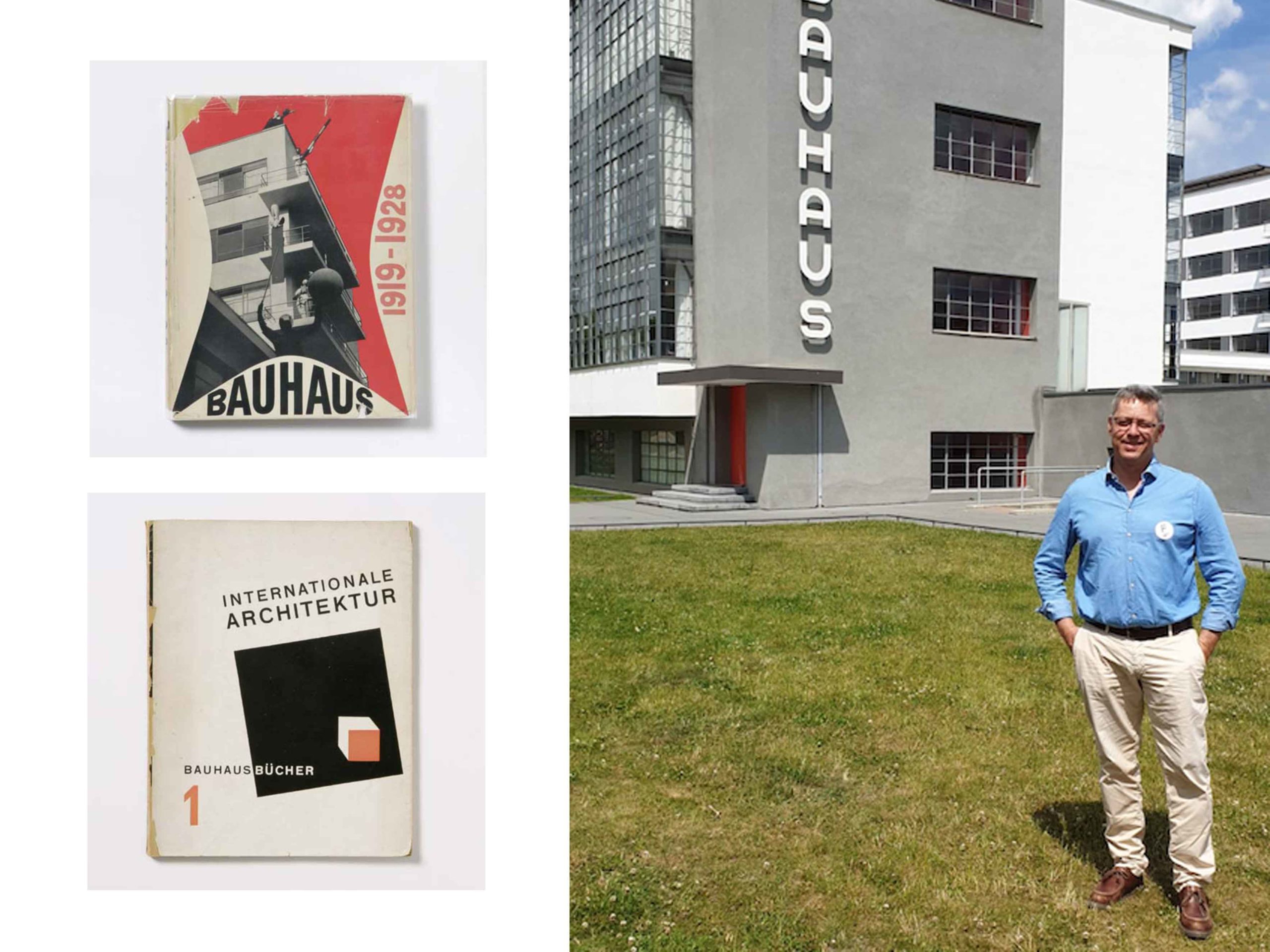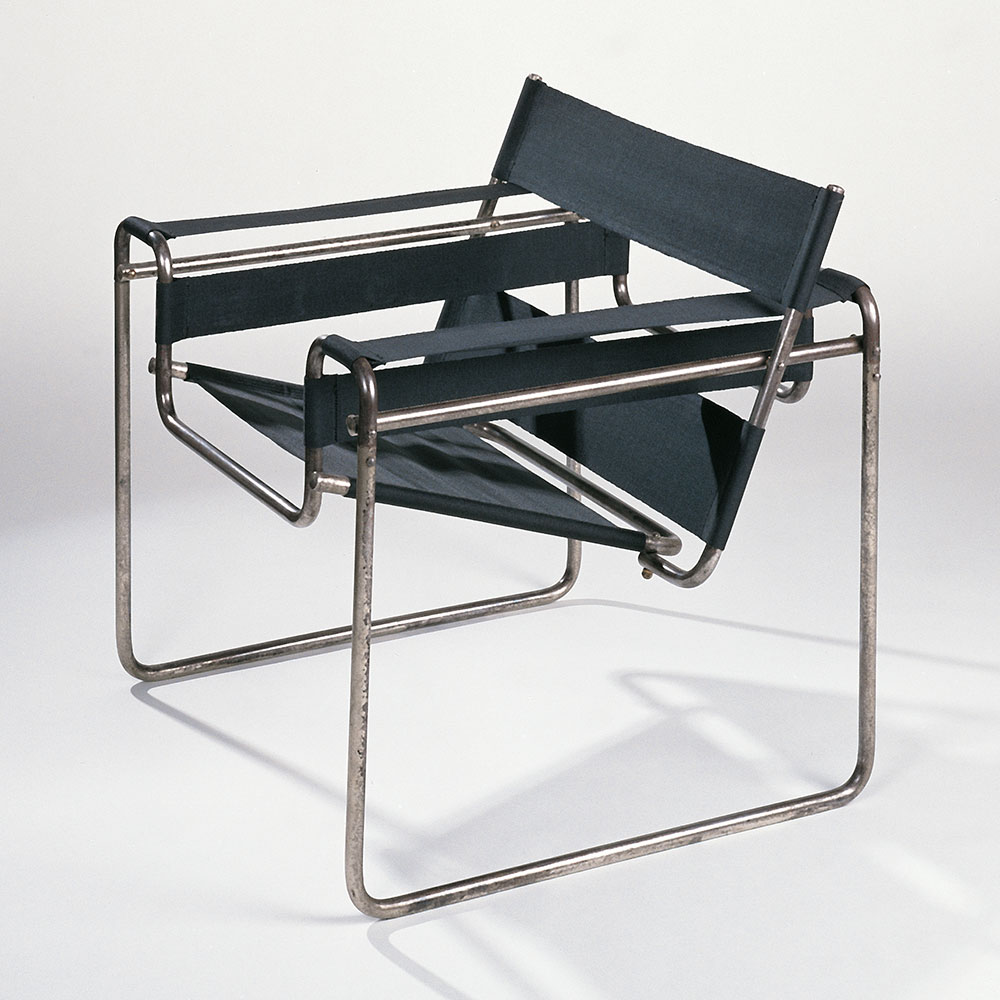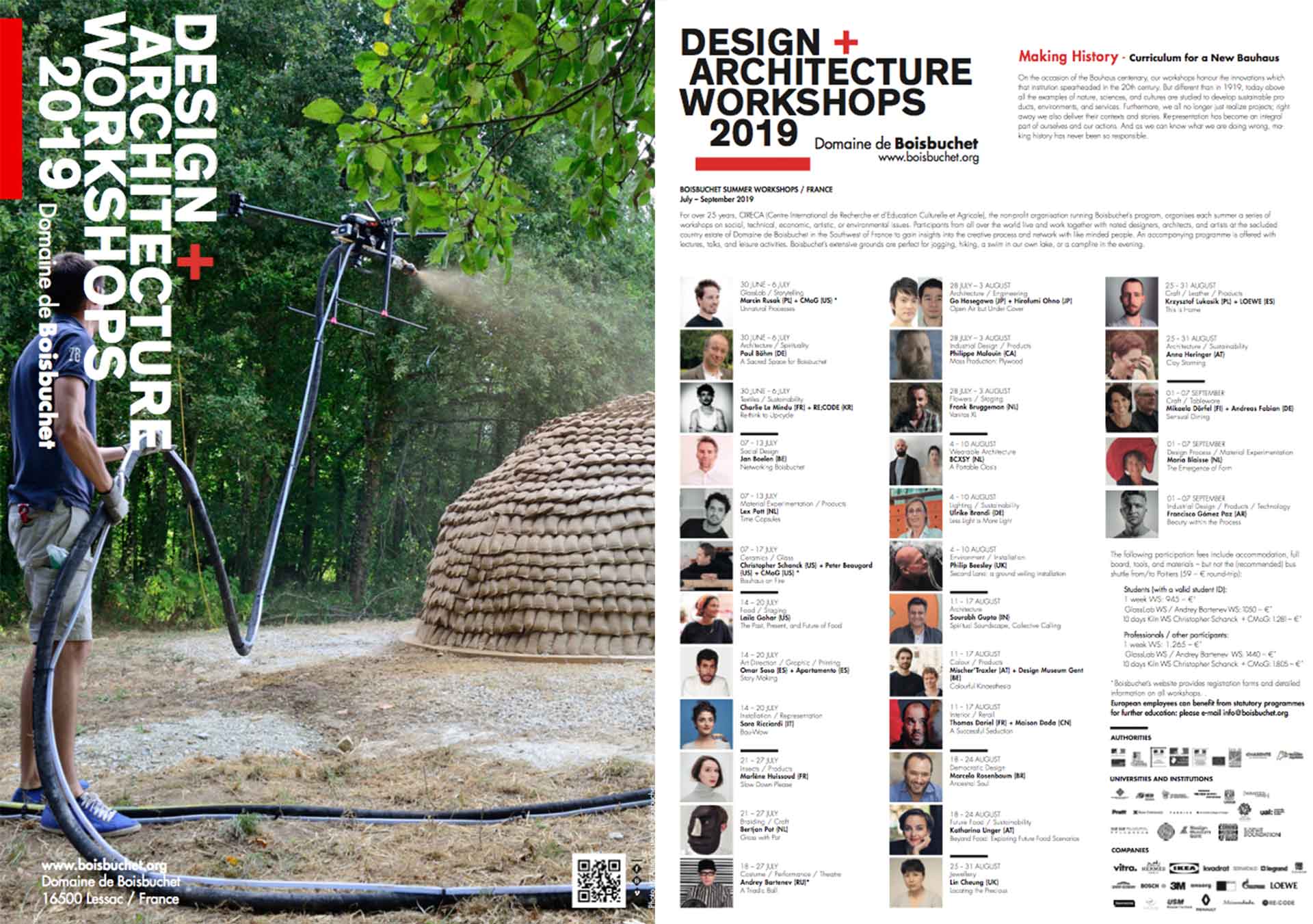Interview with Mathias Schwartz-Clauss, Boisbuchet´s director
juin 13, 2019
by Kester Farrell

Mathias Schwartz-Clauss, born in 1964, holds an MA in art history and philosophy. Between 1990 and 2013 he organized international travelling exhibitions and edited catalogues as Vitra Design Museum’s curator and senior curator. Since 2013 he is responsible for Boisbuchet’s program of workshops and exhibitions and supervises the development of the site’s architecture and landscape.
What does the Bauhaus mean to you?
Design history. It’s a prime example for the complexity of design and for what design can be. It was also quintessential for how we understand design today – in terms of disciplines, in terms of impact. The Bauhaus is also, for me, a lens, in history, because so many different sources of inspiration gathered in that place, and from there spread into the history of design and of our society.
What relevance does the Bauhaus have with Boisbuchet?
The Bauhaus has not been a role-model for the creation of Boisbuchet. But I do see a lot of parallels and a lot of coincidences in what the Bauhaus triggered, in terms of other educational models, other places of experimentation. I’m thinking of the Hochschule für Gestaltung in Ulm or the Black Mountain College – also the Bauhaus in Chicago and other movements. It is an interesting point of reference also because we are here existing at Boisbuchet for more than double the lifetime the Bauhaus existed. In terms of parallels: at Boisbuchet we are practicing a couple of principles of the life and work at the Bauhaus. Life and work both together are already a parallel. The invitations of guest tutors and guest lecturers is a parallel. The creation of new, innovative architecture is a parallel. The celebration of weekly costume parties is also a habit which we developed here as well as students and faculty at the Bauhaus. The mix of different cultures, of different generations, of different disciplines coming together in the Bauhaus is much practiced here as well. So, there are a couple of characteristicsreferences and parallels which, as I said, are not necessarily Bauhaus-inspired, but coincidentally have been there as well.
“we have identified sustainability as subject which best shows the responsibility of design for society today, in comparison to the responsibility of architecture, identified at the time of the nineteen-twenties at the Bauhaus as that discipline which umbrellaed all the other disciplines. “
The women of the Bauhaus were often maligned, overshadowed by their male counterparts, and confined to the weaving workshop – Do you think things have improved for women designers? And how does Boisbuchet reflect that?
Boisbuchet is directed by two men, and our secretary is a woman. But again, this is not programmatic. It seems to me, and to Alexander probably as well, as the way things happened, as not being planned necessarily that way. If we look at the tutors, the percentage of female tutors and male tutors is much more equal nowadays than it has been at the Bauhaus. It’s still not fifty-fifty – which also has to do with the history of the disciplines of design and architecture. But it’s constantly changing, rather quickly in the past ten years I must say. And if we look at the side of the participants, we have more female participants than male participants here at Boisbuchet. But I think at the Bauhaus that already was the case.
But there were more women in the weaving workshop?
Yes. The weaving workshop was probably completely crowded, and the rest was free for men in the wood workshop [laughing]
As opposed to the problems the artists and designers of the Bauhaus were tasked with one-hundred years ago, one of the main problems today’s designers are tasked with is the need for sustainable products and services – How does this season of workshops reflect this need?
Sustainable design is at the core of what we wish to practice here at Boisbuchet – in terms of Boisbuchet’s organisation itself, but, first and foremost, in the design of our programme. And this year in reference to the Bauhaus – we have identified sustainability as subject which best shows the responsibility of design for society today, in comparison to the responsibility of architecture, identified at the time of the nineteen-twenties at the Bauhaus as that discipline which umbrellaed all the other disciplines. The shift in the past decades has been one which has identified design as the discipline which, even more than architecture, is able to consider all different aspects of the society, of the environment, and of the human being, and consider all these and take them into the planning of new services and products. This year, we’ve got designers and architects coming from all over the world, bringing their cultures here to Boisbuchet, addressing global problems of all kinds, in terms of nutrition, in terms of housing, in terms of clothing, in terms of furniture products, equipment. They are already reflecting the need for a global thinking at a local acting – if we consider that as one of those characteristics of sustainability. We’ve got, for instance, Bertjan Pot, from the Netherlands, who is experimenting with old crafts, like the braiding technique, which he employs in the use of grass and natural fibres here found on the site. We’ve got Marlène Huissoud, who is using many kinds of locally-sourced materials in order to address local problems in a sustainable way. From France, as well, but practicing also in China, there is Thomas Dariel, whom we invited to occupy an empty store in downtown Confolens – which is the next town to Boisbuchet. It an abandoned store which we want to revive with a pop-up store. We’ve got Katarina Unger from Austria, who is researching on the use of insects and other alternative sources of nutrition. Go Hasegawa from Japan is co-operating with a local wood company using sustainably-resourced wood for the creation of a pergola – a roof for an outdoor dining-area. So, the programme is full of such examples. And certainly, one of the most obvious, for the interest in sustainable design, is our co-operation with RE;CODE, a Korean brand which we teamed up with French designer and artist, Charlie Le Mindu, for a workshop that recycles and upcycles textiles and other worn-out materials for the creation of fashion – but also other products which might come out of that.
Summer Workshop Program 2019. Click for more information.
“I would hope that participants of the workshops take back home a sense of responsibility. For themselves – taking care of themselves, that’s very important – taking care of their neighbours, for society in general, taking care of what they eat, how they eat, how they live, how they clothe, how they communicate with each other. That’s what design is about and that’s what Boisbuchet, as a place where people come together and experiment together can offer to the participants here”
As well as a school of architecture and design, the Bauhaus was often tangled up in the politics of its time. Do you think politics has a place in the world of contemporary design?
Contemporary politics and design have a lot to do with each other. Anything we do today can’t ignore politics. And design, as a discipline, which considers all these different parameters of our life, of course faces politics. It’s a political act, almost by definition. Whatever design uses and proposes for society has a political impact. It is influencing the way we act; it is influencing the way we communicate; it is influencing the way we think. So, design, of course, has a tremendous impact, and we must consider largely its political consequences. In the end, that’s why we exist here in Boisbuchet. The reason why we are doing these workshops, why we are inviting creative, intelligent and engaged people, as tutors and as students, from all over the world, is that we consider this place a free-thinking, free-acting laboratory for designers to influence positively the future of this society.
The collection of Alexander von Vegesack comprises over two-thousand objects and twenty-thousand publications, drawings, letters and other documents, along with about one-hundred works of art. What is your favourite design from the Bauhaus? And what distinguishes a Bauhaus design from any other?
I’m afraid my answer is a bit unsexy and boring, but my favourite Bauhaus object in Alexander von Vegesack’s design collection is the Wassily armchair by Marcel Breuer, just because it symbolises best, for me, Bauhaus, in its aesthetics, in its production principles, in its experimental history, but, also, because this particular piece in Alexander’s collection is one of the earliest pieces in the history of production of this B3 or Wassily armchair. Aesthetically, it condenses rationalism and abstraction – typical for the period. Production-wise, it employed industrial innovation: Mannesmann, the German producer of steel tubes, contributed the seamless tubes for the frame of this chair. In terms of design experimentation, the inspiration for this armchair was a bicycle – a cross-disciplinary thinking which matches very well the spirit of the Bauhaus. For that reason, this iconic piece is also my favourite in the collection. Speaking of the collection, it has in the past often been a primary resource for the development of our summer exhibitions here at Boisbuchet. And this year again we’re taking advantage of a couple of rare and interesting pieces in the collection, which will illustrate the history of the Bauhaus, as well as the history of its succeeding institutions, such as the Black Mountain College, such as the Hochschule für Gestaltung in Ulm, and Boisbuchet itself. As we consider ourselves to work in that spirit of the Bauhaus, we are going to document a bit of our own work in that exhibition as well. And the exhibition is going to be called “Les Enfants du Bauhaus” – Children of the Bauhaus. It is produced right now together with two graphic design students from the Design Village in India and a Spanish architect – a very small and concentrated team. It is going to be shown here at Boisbuchet from the 22nd of June to the 22nd of September.

B 3, Wassily (1925), Marcel Breuer . Boisbuchet´s Design Collection ©CIRECA
Is there anything else you’d like to add?
Considering the Bauhaus theme this summer, I would hope that participants of the workshops take back home a sense of responsibility. For themselves – taking care of themselves, that’s very important – taking care of their neighbours, for society in general, taking care of what they eat, how they eat, how they live, how they clothe, how they communicate with each other. That’s what design is about and that’s what Boisbuchet, as a place where people come together and experiment together can offer to the participants here.


